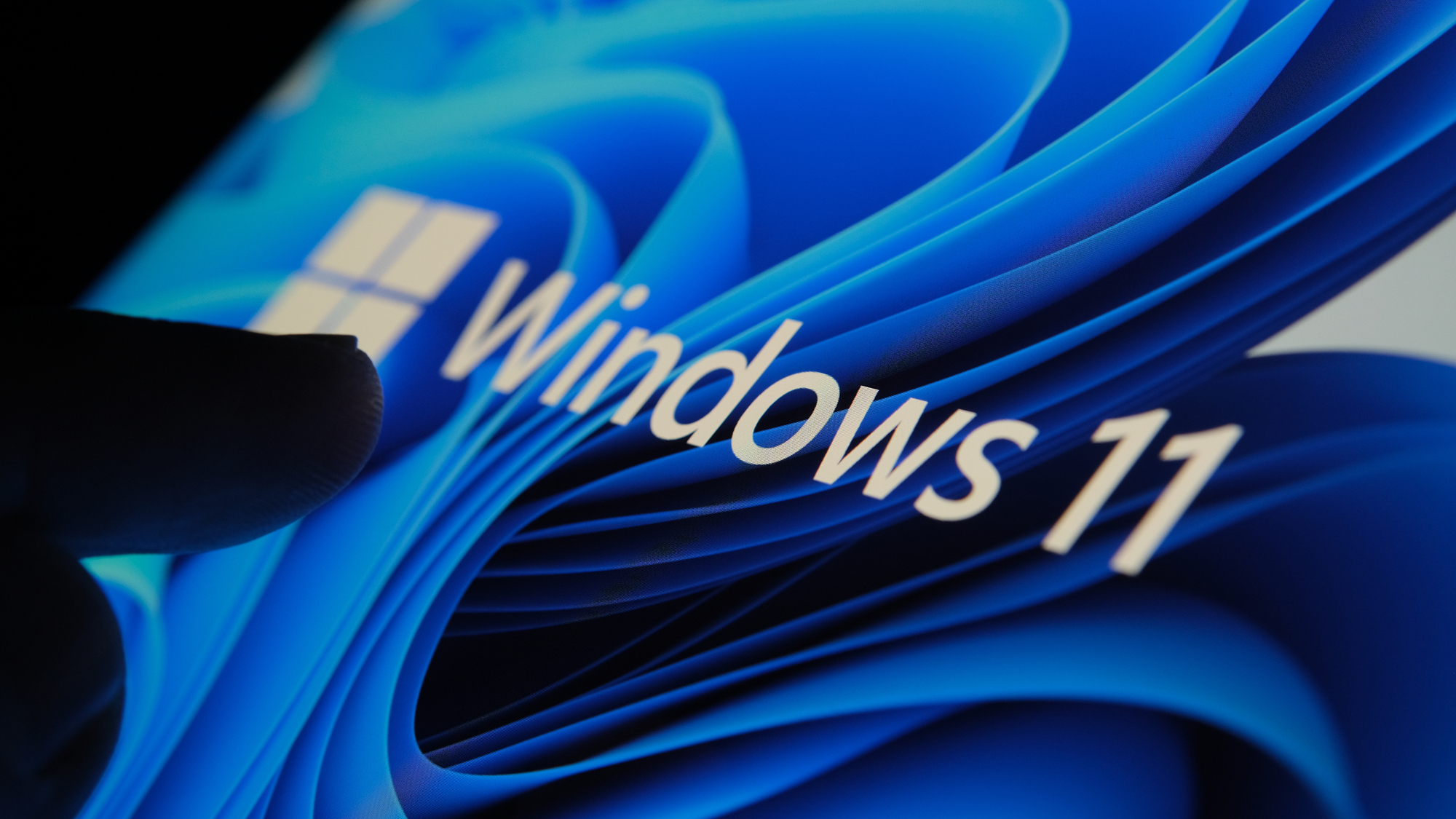Windows 11 LTSC 2024 arrives making TPM and Secure Boot optional — lower storage requirements, too
Windows 11 officialy squeezed within the confines of 16GB storage.

Microsoft has published the system requirements for Windows 11 IoT Enterprise LTSC 2024, which recently started to roll out. The specification will help steer design decisions for upcoming devices and computers running Windows IoT Enterprise. Lowered minimum specifications, with TPM and Secure Boot optional, are among the most interesting aspects of this release.
Windows 11 IoT Enterprise is a full version of Windows Enterprise intended for fixed-purpose devices like ATMs, point-of-sale terminals, digital signage, kiosks, and industrial automation systems, among others. In other words, this version of Windows is not for your desktop or laptop computer, but rather for custom appliance-type devices you might encounter or use that need an operating system. However, the release may also be of interest to makers, modders, and tinkerers.
Microsoft offers two licensing channels for Windows 11 IoT Enterprise, a General Availability Channel (GAC) and the Long-Term Servicing Channel (LTSC.) The LTSC option provides a 10-year support lifecycle for these fixed-purpose devices in which there are unlikely to be any functionality changes.
| Header Cell - Column 0 | Windows 11 IoT Enterprise LTSC 2024 | Header Cell - Column 2 |
|---|---|---|
| Component | Preferred minimum requirements | Optional minimum requirements |
| Processor | 1 GHz, 2 cores | 1 GHz, 2 cores |
| System memory | 4GB | 2 GB |
| Storage size | 64GB | 16 GB |
| Storage type | SSD | SSD, HDD, Hybrid Hard Drive, Flash |
| System firmware | UEFI | BIOS |
| TPM | TPM 2.0 | Optional |
| Secure Boot | Enabled | Optional |
| DirectX | DirectX 12 | DirectX 10 / none |
| Display | 9-inch diagonal, 720p HD | Custom size / optional |
What’s most notable about the system requirements for Windows 11 IoT Enterprise LTSC 2024 is that it can run on computing devices with much less storage than is typically required, as little as 16GB. Moreover, the TPM and Secure Boot requirements are optional for this version.
Additionally, Windows 11 IoT Enterprise LTSC will support certain Qualcomm processors for the first time, in addition to AMD, Intel, and NXP processors. Windows 10 IoT Enterprise LTSC included support for AMD, Intel, and NXP processors, but not Qualcomm. This new support is expected since Microsoft recently announced Surface laptops using the Qualcomm Snapdragon X Elite Arm-based processor.
Finally, the DirectX and display requirements are more flexible. The IoT Enterprise versions can be installed with GPUs only supporting DirectX 10 or offering no DirectX support at all. These systems can also have custom-sized displays or no display at all. Typically, Windows 11 requires DirectX 12 support with a 720p HD display of at least 9 inches (diagonal).
These lower system requirements are possible because of the fixed-purpose nature of devices running Windows 11 IoT Enterprise LTSC. Such devices typically run no more than five apps at a time, often only one application. Furthermore, Enterprise LTSC doesn’t have the breadth of security software and features of regular versions of Windows. It doesn’t need them, because Enterprise LTSC is intended for devices secured behind firewalls with little to no internet connectivity.
Get Tom's Hardware's best news and in-depth reviews, straight to your inbox.

Jeff Butts has been covering tech news for more than a decade, and his IT experience predates the internet. Yes, he remembers when 9600 baud was “fast.” He especially enjoys covering DIY and Maker topics, along with anything on the bleeding edge of technology.
-
Albert.Thomas "In other words, this version of Windows is not for your desktop or laptop computer, but rather for custom appliance-type devices you might encounter or use that need an operating system."Reply
And it's the only version of Windows that I am interested in, speaking as a consumer who is fed up with the crap that Microsoft is forcing down our throats with Windows 11 Home and Professional. -
coromonadalix yeah light on ressources, and started services .... thats why you can run on low ram countReply
This should be a real pc version, get rid of all the useless crap
BUT SW side : as soon you install softs, they too crap windows .... -
stonecarver System Requirements for Windows 11 IoT Enterprise LTSC 2024Reply
Header Cell - Column 0Windows 11 IoT Enterprise LTSC 2024Header Cell - Column 2ComponentPreferred minimum requirementsOptional minimum requirementsProcessor1 GHz, 2 cores1 GHz, 2 coresSystem memory4GB2 GBStorage size64GB16 GBStorage typeSSDSSD, HDD, Hybrid Hard Drive, FlashSystem firmwareUEFIBIOSTPMTPM 2.0OptionalSecure BootEnabledOptionalDirectXDirectX 12DirectX 10 / noneDisplay9-inch diagonal, 720p HDCustom size / optional
So great news. So for all the road blocks and the work arounds to make Windows 11 work on non supported shiny new parts. Microsoft goes and does it itself. :popcorn: -
USAFRet Reply
The issue is the legal/reasonable cost availability of LTSC/Enterprise.stonecarver said:So great news. So for all the road blocks and the work arounds to make Windows 11 work on non supported shiny new parts. Microsoft goes and does it itself. -
stonecarver Reply
I hear you. I'm just looking at it as proof of concept. :popcorn:USAFRet said:The issue is the legal/reasonable cost availability of LTSC/Enterprise. -
USAFRet Reply
It was always possible by MS.stonecarver said:I hear you. I'm just looking at it as proof of concept. :popcorn:
Just unadd the specific requirements. -
stonecarver Reply
Your absolutes right but now Microsoft Official. That's the big news here. Just very interesting move from Microsoft almost 4 years after Windows 11 hit the market.USAFRet said:It was always possible.
Just unadd the specific requirements.
But so many myths about Windows 11 even if you did the bypass on non supported hardware has just been made moot.
How many people have came here for help and were sent packing with that same question. How do I install Windows 11 on old system.
Most answers were you need an new system, end of subject.
And if you get it working it will fail, or Microsoft will send a magic bullet and disable your Windows 11 install on non supported CPU's.
Those new system requirement are so low compared someone who came here with a I7 7700 and were told nope your system is crap not good enough for Windows 11.
How many people have trashed there perfectly functioning still capable PC over a Microsoft soft lock with system requirements that now will let a 1 GHz, 2 cores run this new Enterprise version. -
USAFRet Reply
Right.stonecarver said:Your absolutes right but now Microsoft Official. That's the big news here. Just very interesting move from Microsoft almost 4 years after Windows 11 hit the market.
But so many myths about Windows 11 even if you did the bypass on non supported hardware has just been made moot.
How many people have came here for help and were sent packing with that same question. How do I install Windows 11 on old system.
Most answers were you need an new system, end of subject.
And if you get it working it will fail, or Microsoft will send a magic bullet and disable your Windows 11 install on non supported CPU's.
Those new system requirement are so low compared someone who came here with a I7 7700 and were told nope your system is crap not good enough for Windows 11.
How many people have trashed there perfectly functioning still capable PC over a Microsoft soft lock with system requirements that now will let a 1 GHz, 2 cores run this new Enterprise version.
But MS had been pushing the TPM requirement for years.
Manufacturers pushed back.
The requirement still holds for Home and Pro.
Workarounds? Sure.
Which may or may not last.
People that trashed perfectly working Win 10 systems just to go to Win 11....I can't use the word for that in polite company.
Win 10 still has a year+ of viability.